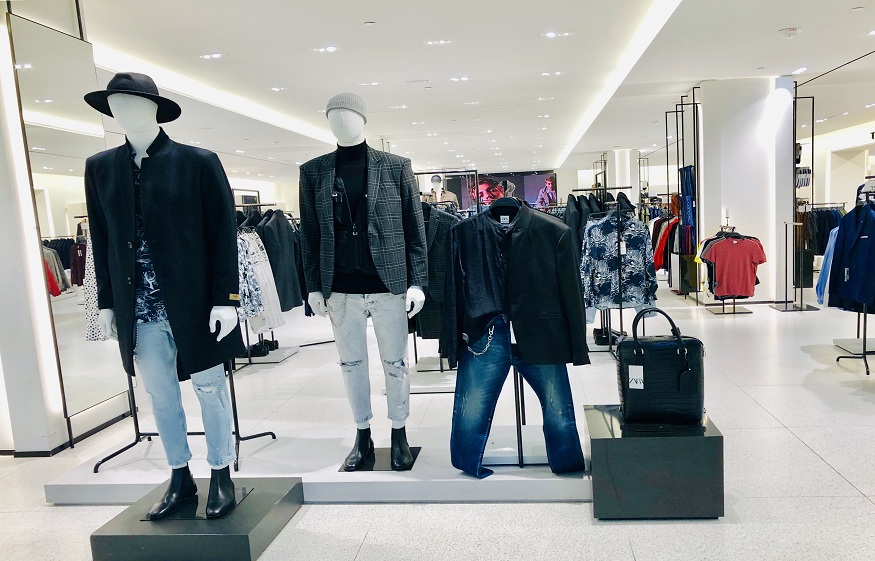Visual merchandising is a strategic approach that uses the visual elements of a retail space to create an engaging and immersive environment for customers.
It involves the use of various techniques, such as product placement, signage, lighting, and displays, to attract attention, increase sales, and enhance the overall shopping experience.
While visual merchandising can be a powerful tool for retailers, it also has its share of pros and cons. Let’s delve into both sides of the equation.
Pros of Visual Merchandising
Visual merchandising is a powerful retail marketing tool that combines creativity, psychology, and design principles to enhance the aesthetics of a retail space and drive consumer engagement.
With the rise of e-commerce, visual merchandising has become more critical than ever, as it offers a unique opportunity for brick-and-mortar stores to captivate customers and create memorable experiences.
We will delve into the numerous pros of visual merchandising and explore how it can benefit businesses in various ways.
1. Enhanced Brand Identity
Visual merchandising allows retailers to effectively convey their brand identity and story to customers.
Through strategic placement of products, signage, color schemes, lighting, and other visual elements, businesses can create an immersive environment that reflects their unique personality and values.
By consistently reinforcing the brand image, visual merchandising helps establish a strong connection with customers, leading to increased brand recognition and loyalty.
2. Increased Sales
One of the primary objectives of visual merchandising is to boost sales by enticing customers to make purchases.
Well-executed visual displays can attract attention, highlight key products, and create a sense of urgency, encouraging impulse buys.
By creating visually appealing arrangements, using eye-catching props, and optimizing product placement, businesses can effectively drive sales and improve the overall profitability of their stores.
3. Improved Customer Experience
Visual merchandising plays a crucial role in enhancing the customer experience. By creating visually appealing and organized displays, retailers can guide customers through their stores, making their shopping journeys more enjoyable and convenient.
Thoughtfully designed layouts, clear signage, and attractive product presentations contribute to a positive shopping experience, leading to higher customer satisfaction and the likelihood of repeat visits.
4. Effective Product Communication
Visual merchandising enables retailers to communicate product features, benefits, and promotions more effectively.
Through well-designed displays and signage, businesses can showcase the unique selling points of their products, educate customers about their benefits, and highlight any special offers or discounts.
This enhances customer understanding, helps build trust, and increases the likelihood of conversions.
5. Competitive Advantage
In today’s competitive retail landscape, it is crucial for businesses to differentiate themselves from competitors.
Visual merchandising provides a platform for retailers to showcase their creativity and innovation, setting them apart from the crowd.
Unique and visually striking displays can capture attention, generate buzz, and create a memorable impression on customers.
This distinctiveness helps businesses stand out, attract more foot traffic, and gain a competitive edge.
6. Adaptability and Flexibility
One of the great advantages of visual merchandising is its adaptability to changing trends and seasons.
Retailers can easily update their displays to reflect current themes, holidays, or promotions, keeping the shopping experience fresh and engaging.
By staying dynamic and responsive to customer preferences, businesses can maintain relevance and ensure continued footfall.
Cons of visual merchandising
While this strategy has numerous advantages, it is important to acknowledge that visual merchandising is not without its drawbacks. We will explore some of the cons associated with visual merchandising.
1. Overstimulation and Sensory Overload:
One of the potential downsides of visual merchandising is the risk of overstimulating customers.
Retailers often strive to create visually appealing displays that are attention-grabbing and captivating.
However, an excessive use of colors, lights, textures, and scents can overwhelm customers, leading to sensory overload.
When shoppers are bombarded with too much visual information, it can be difficult for them to focus on specific products or make well-informed decisions.
The result may be confusion, frustration, or even a decision to leave the store altogether.
2. Inconsistent Branding
Visual merchandising provides an opportunity for retailers to establish and reinforce their brand identity.
However, if not executed carefully, it can result in inconsistent retail branding. Each display should align with the retailer’s brand image, values, and target audience.
Inconsistent visual merchandising can confuse customers and dilute the overall brand message.
It is crucial for retailers to maintain a coherent and cohesive visual language throughout their store to strengthen brand recognition and customer loyalty.
3. Increased Costs
Implementing effective visual merchandising strategies often requires investments in design, fixtures, lighting, props, and signage.
While these investments can potentially yield positive returns, they also contribute to increased costs for retailers.
Regular updates and modifications to displays are necessary to keep them fresh and appealing. Moreover, the cost of training staff in visual merchandising techniques and maintaining the required inventory can add up over time.
These financial considerations need to be carefully evaluated to ensure that the benefits of visual merchandising outweigh the associated costs.
4. Limited Flexibility and Adaptability
Visual merchandising often involves physical displays and fixtures that are not easily adjustable or adaptable to changing trends or seasons.
This lack of flexibility can be a disadvantage, particularly in industries where products rapidly evolve or when retailers need to react quickly to market shifts.
Maintaining a consistent visual aesthetic while incorporating new products or responding to emerging trends can pose challenges.
The need for ongoing updates and adjustments can be time-consuming and demanding for retailers.
5. Potential Distraction from Functional Aspects:
While visual merchandising focuses on aesthetics and creating an engaging shopping environment, it can sometimes distract from the functional aspects of a store.
If customers find it difficult to locate products or navigate through cluttered displays, it can hamper the overall shopping experience.
It is crucial for retailers to strike a balance between visually appealing displays and ensuring that the practical aspects of a store, such as product accessibility and ease of movement, are not compromised.
Conclusion
Visual merchandising can be a powerful tool for businesses looking to boost sales and create a memorable brand image.
However, it is important to consider the potential drawbacks before investing in a visual merchandising strategy.
By weighing the pros and cons, businesses can determine whether visual merchandising is right for them and make an informed decision about how to move forward.




